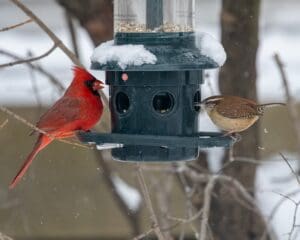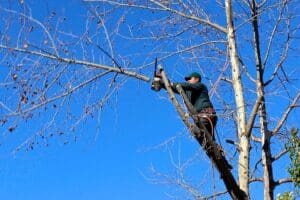
Hard to believe that summer is over. Is your lawn ready for fall and winter? if you want your lawn to be lush and beautiful next spring, there are some fall lawncare tips that you can use. Below are a few tips that you can use to have a gorgeous, healthy lawn.
Fall Lawncare Tips 1 – Loosen Up the Soil
Regularly aerating your lawn, once every 2 or so years, will prevent your soil from getting covered in thatch and becoming compacted. Thatch is a layer of thick stems, debris, and roots that will block oxygen, nutrients, and water from reaching your soil.
Core aerators solve both of these problems by punching some holes through that thatch as well as pulling soil plugs up. You should do this directly before you fertilize it. The holes are going to let your fertilizer go into the roots.
Fall Lawncare Tips 2 – Add some Fertilizer
Just as the roots of your grass will need water so that they can last through winter, those roots also need some plant sugars. They are going to protect the roots from becoming frozen. It also will provide energy to the whole plant so that it can bounce back come springtime. The sugars come from chlorophyll, which is produced by the grass when it has enough nitrogen.
That’s why it’s a good idea to apply a slow-release fertilizer in the late fall. It’s recommended to use granular 24-0-10. Those numbers indicate how much of nitrogen, then phosphorus, and finally potassium is in the fertilizer. Potassium also is very important during this time because it helps with the growth of roots, the protection against disease, the tolerance to cold, and the resistance to cold. Before using the fertilizer, however, you want to test your soil and see what your lawn really needs.
If you are close to a waterway, however, you shouldn’t use fertilizer since it can cause problems with contamination due to runoff. You need a buffer of at least 5 feet.
Fall Lawncare Tips 3 – Continue to Water
A common mistake that people make when fall comes is that they don’t water their lawn as much as the weather is cooler. Even though it’s true that fall brings more rain and more dew, and that the water doesn’t evaporate as much during fall, it’s possible that the lawn still isn’t getting the water it needs.
Is your lawn getting a minimum of 1” of water per week? If you aren’t sure, you can get a rain gauge to keep track. If not, you want to keep your irrigation system or sprinklers going until Halloween. By then, you’re going to want to disconnect your hoses and flush your system. This will help you avoid frozen spigots and pipes.
These are three fall lawncare tips that you can use to help your lawn be beautiful and healthy when spring comes. Not sure about what your lawn needs? Contact us here and we’ll be glad to give your lawn an evaluation.



